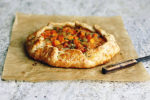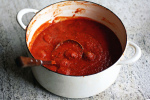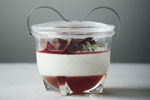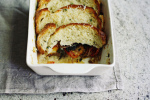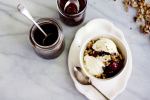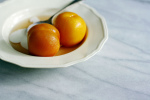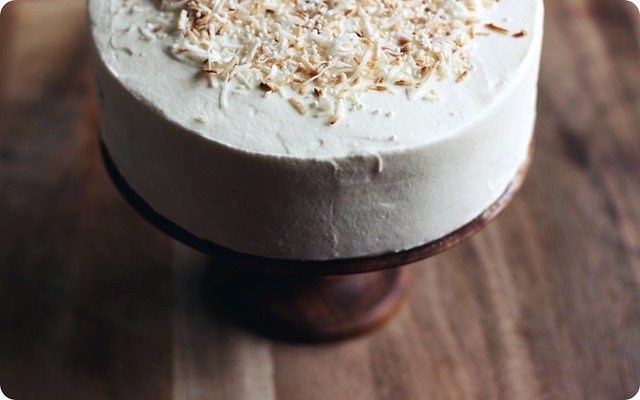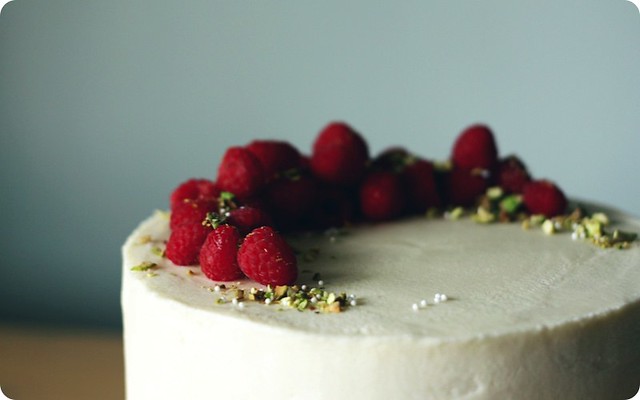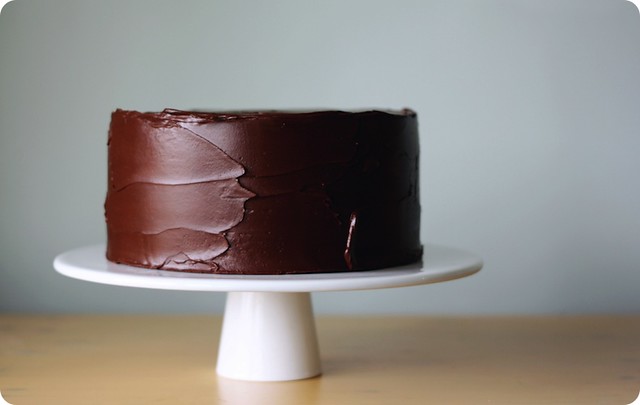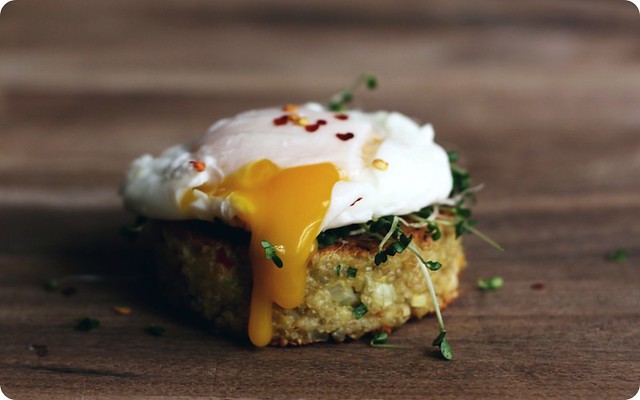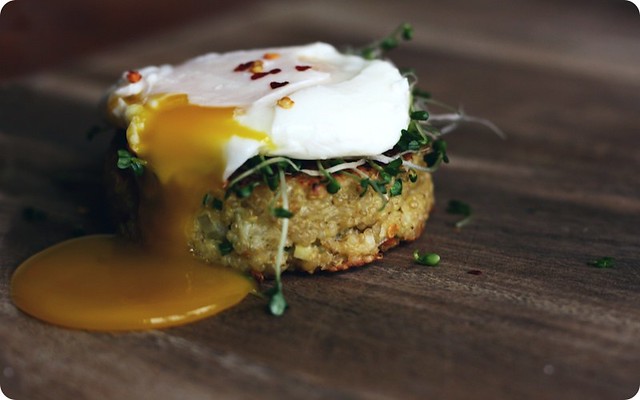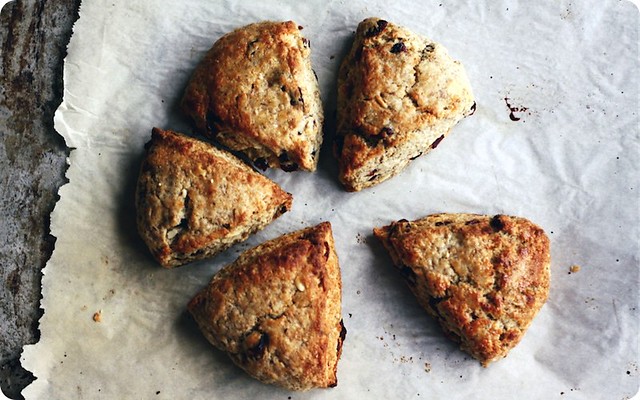Most ideally
 Monday, April 25, 2011 at 8:08AM
Monday, April 25, 2011 at 8:08AM How many times, do you think, does it take for something to become a tradition? We're at year three of making icebox cakes every third week in April, and it's starting to feel like it's been our way since forever.
I'm liking it. A whole lot.
After the cakes of everyone else's days of revelry, when we end up on my birthday, this is what we do.
It requires a box of graham crackers, a carton of cream, and this year, a half dozen eggs. A whole half carton, yes, I mean it, because we made coconut pastry cream and it's what took our usual and made it the all-time favourite. The cake is, to all intents, coconut cream pie without the bother of crust and turning on the oven. And despite those subtractions the sum we are left with is the whole shebang of all the its best parts.
It's a step added to past versions, but the pastry cream is a breeze to manage I promise. It's custard that's thickened with a starch in addition to the egg's yolks. It is thick and glossy, and here coconut milk brings flavour and fragrance. Coconut milk has a clean sweetness to its scent, and since there's not too much sugar to muck it up, that elusive essence remains.
Still, I wanted to up the coconut ante so to speak, and my hand settled upon the lid of our jar of shredded coconut. My thought was to not only to further infuse the cream, but I was also thinking of its texture, because I find it difficult to conjure the flavour of coconut without a thought of its chew; most specifically, most ideally, the damp, toothsome centre of a coconut macaroon. And we've got it here in spades.
I had planned on chocolate to pair with the coconut, however a long story, a confusing grocery list, an impending holiday weekend following a weekend of possibly too much of good things, meant I was without the chocolate I wanted, but stumbled upon something even better instead.
Blackberry jam.
A few weeks ago, in a fit of unseasonality, I made blackberry jam in the midst of March. We had frozen berries stocked in our freezer from last season, and in a burst of positive thinking that if I used the icy berries then fresh ones would soon follow at our market, I set about using them up. The jam had sugar, lemon and nothing else besides the fruit.
Now my hand set upon the lid to that jar. I heated a few spoonfuls, added a teacup's worth of fresh (frozen) ones to the thickly bubbling jam, and stirred it all through. Once the fruit squished and softened, barely cooked, I pressed it all through a sieve. Seedless, smooth and glistening, the sauce had body with the direct brightness of fresh fruit. It was the match we needed for our coconut cream - without it the cake would have been too much of the same, all cream and sweet; the jam's the standout, more than chocolate could have been.
It's not often I'll say fruit over chocolate, for the record.
Essential variables sorted, the remaining preparation was as per well-tread habit. Benjamin dealt out graham crackers, our card sharp's getting quite good at Crazy Eights and happy put his skills to culinary use; he lined each up neatly to make a layer in the bottom of the pan. With William's assitance we spread on cream, then jam, and repeated the routine until everything was used up. Overnight, in the cold of the fridge, the crackers turned to cake - puffing up, leveling out, absorbing some of the moisture from the cream so that the filling goes that much more sumptuous. The cake got turned out, slipped into a coat of whipped vanilla cream, and it was ready for the party.
Hooray.
Coconut Cream Icebox Cake
The instructions are for a square cake, which is easier and neater than our attempt at a round. But, if you decide to aim for circular, these amounts will be about right. The cake can also be served, trifle style, in the dish it was made. In that case, you'll only need about 1/2 cup of cream, whipped, to cover the top.
For the Coconut Pastry Cream
1 cup coconut milk
1 cup milk
1 vanilla bean, split
6 egg yolks
3 tablespoons cornstarch
1/3 cup granulated sugar
1/8 teaspoon salt
1/2 cup shredded coconut, see note
For the Blackberry Sauce (makes approximately 1 cup)
1 pound blackberries, hulled and roughly chopped
1/3 cup caster sugar, or thereabouts
1 tablespoon freshly-squeezed lemon juice
A pinch of salt
For the cake
2 cups whipping cream, divided
Coconut pastry cream
1/4 cup confectioner's sugar or thereabouts
A pinch of salt
45 honey graham crackers, the single kind
One recipe blackberry sauce, divided
Make the pastry cream. In a medium saucepan heat the coconut milk and milk. Scrape the seeds from the vanilla pod, stir those into the milks, then pop the pod in too. Bring the mixture to a simmer, then set aside to steep for a few minutes. Remove the vanilla bean.
In a medium bowl, whisk the egg yolks, sugar, cornstarch until smooth, pale and fluffy. Slowly and in a thin stream, pour the hot milks into the egg yolks while whisking constantly. Continue whisking until completely combined. Add in the salt and whisk again.
Strain the mixture back into the saucepan, and bring to a boil over medium heat, whisking constantly. Cook until thickened and the custard boils at its centre. Continue to cook, still whisking well, for another minute.
Off the heat, stir in the shredded coconut. Transfer to a bowl, pressing a piece of clingfilm directly onto the surface to prevent a skin from forming as the pastry cools. Refrigerate until well chilled and firm, around 2 hours.
To make the sauce, put three-quarters of the berries in medium saucepan with 2 tablespoons of the sugar, the salt and 2 teaspoons of the lemon juice. Bring to a boil over medium heat, then reduce to a simmer. Cook, stirring, until the fruit becomes soft and the juices begin to thicken, around 7-10 minutes.
Carefully remove the blackberries to a blender (or use an immersion style), and process until smooth. Push the puréed sauce through a sieve, back into the saucepan. Return to the heat and bring again to a simmer, stirring often. Cook the sauce until it becomes truly thick, with a clear, glossy look, around 10 minutes. At this point you want it on the verge of jammy-ness, close to the texture of hot fudge sauce.
Tumble in the reserved berries, give them a few turns in the pan and cook for another minute or so.
Again with care, remove the blackberries to that blender of yours and whirr them around. Sieve again, this time to a clean container, and set the sauce aside to cool. It should be about the consistency of chocolate syrup, rather than fudge, and will coat the back of a spoon thickly, but not heavily. Once it has cooled to a non-molten level, taste for balance and stir in the rest of the sugar and lemon if need be.
To assemble the cake. Line an 8-by-8-inch metal cake pan with a cross of clingfilm, leaving an overhang on all sides. Set aside.
In the bowl of a stand mixer with the whisk attachment, or in a medium bowl with a hand blender or whisk, begin to whip 3/4 cup of well-chilled heavy cream until the cream begins to hold soft peaks. Take the coconut pastry cream, give it a stir or two to make sure it's smooth, then fold the whipped cream into the pastry cream.
Spread a small amount of the coconut cream on the bottom of the prepared cake pan. Lay 9 crackers, in a 3-by-3 grid, on top of the cream. Spoon one-quarter of the cream on top of the crackers. Then, using an offset spatula, gently spread the cream to cover the crackers entirely. Drizzle a few tablespoons of the blackberry sauce over the cream, spreading to form an even layer if desired. (You will use a generous 1/2 cup of the sauce for the entire cake.)
Top with another layer of graham crackers, continuing the layering until you have 5 layers of crackers and 4 of the pastry cream and blackberry. Make sure to reserve a small amount of cream to cover the last layer of crackers (no sauce on this one).
Cover loosely with a piece of clingfilm, then draw the overhanging clingfilm from the sides up to cover the edges. Refrigerate for at least 8 hours and up to 2 days.
About 1 hour before serving, remove the cake from the fridge and peel back the clingfilm. Invert the cake onto a serving plate, removing the remaining clingfilm from the top and sides. Smooth out the sides with an offset spatula if needed. Place the cake in the freezer, uncovered, to chill for 30 minutes.
In the bowl of a stand mixer with the whisk attachment, or in a medium bowl with a hand blender or whisk, begin to whip the remaining 1 1/4 cup of well-chilled heavy cream. When the cream begins to thicken, sift in the 1/4 cup confectioner's sugar. With the machine set to medium-high, whip the cream until holds a firm peak, but being careful not to over beat.
Take the cake out of the refrigerator and gently spread a thin layer of the whipped cream to cover. Chill the finished cake in the refrigerator for 30 minutes, then serve with the remaining blackberry sauce passed alongside.
Makes one 8-inch square cake.
Notes:
- Sweetened or unsweetened shredded coconut can be used, depending on your taste. The granulated sugar may need to be adjusted accordingly.
- In the case you do not have both jam and fresh fruit on hand, this recipe was written with a from-scratch berry sauce. If you do, then simply heat around a 1/4 cup of blackberry jam in a saucepan over medium heat. When it at a simmer, add 1/2 cup fresh blackberries to the pot. Stir, cooking the fruit briefly, then proceed with the blending and straining of the sauce as detailed above.
- The thing about fruit sauces is that so much will depend on the fruit itself. You might need more or less sugar than I've suggested. This recipe will make around 1 cup, but it might be more or less depending on the juiciness of the fruit and how thick your final sauce ends up. Any leftover sauce can be used over to drizzle over ice cream or stirred into yogurt. It's also rather good as the base of a berried champagne cocktail (which gets my vote).
- Previous icebox cakes can be seen here and here.
 blackberry,
blackberry,  coconut,
coconut,  icebox cake in
icebox cake in  baking,
baking,  cake
cake 

